Marie Antoinette was born an Archduchess of Austria on 2nd November 1755. She was the youngest daughter of Empress Maria Theresa and Francis I, Holy Roman Emperor. Following the Seven Years’ War, Empress Maria Theresa decided to end hostilities with her long-time enemy, King Louis XV of France. This led to the marriage of Marie Antoinette with the grandson of King Louis XV, Louis-Auguste. Marie was 14 and Louis was 15 at the time of the marriage, which took place on 16th May 1770. Upon the death of Louis XV on 10th May 1774, Louis-Auguste ascended the throne of France as King Louis XVI and Marie Antoinette became Queen.
Difficulties In Marriage
From the beginning, Marie Antoinette was disliked by many people in France as they considered her a foreigner and because she belonged to Austria, the nation which had dragged France into the disastrous Seven Years’ War. Then, for the first seven years, Marie Antoinette’s marriage with Louis XVI was not consummated. This led to various rumors circulating in the streets of France. It is not known with certainty why the marriage was unconsummated. It is said that Louis XVI had a condition which made sex painful. If there was such a condition, it seemed to have resolved and, on 19th December 1778, Marie Antoinette gave birth to Marie Therese, the first of her four children.
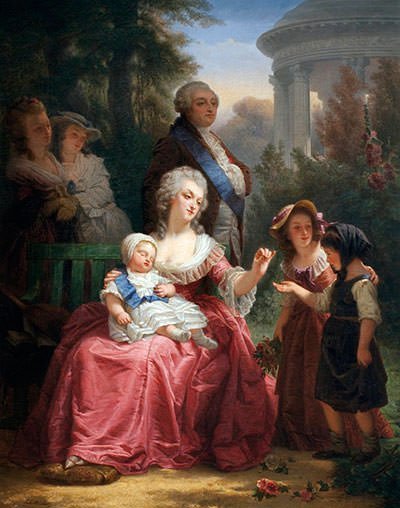
Madame Deficit
In the 1770s and 1780s, France was facing a severe financial crisis. At such a time, Marie Antoinette spent lavishly on fashion, luxuries and gambling. Two weeks after ascending the throne, Louis XVI had given Marie Antoinette an estate, the Petit Trianon, and free rein to renovate it. The property cost Louis 2 million francs to build (around 6 million U.S. dollars in 2006). Also, Marie Antoinette had nearly 300 dresses made annually for her various social engagements at the court of Versailles, her private parties at Petit Trianon and for the stage of her jewel-box theater. She had an original hairstyle commissioned and an exclusive fragrance made for her. The extravagance of Marie Antoinette at a time when France was in great debt earned her the nickname Madame Deficit and made her hugely unpopular in France.

Hans Axel von Fersen
Marie Antoinette was involved in numerous scandals leading up to the French Revolution. She had met a Swedish soldier named Hans Axel von Fersen in January 1774 at a ball in Paris when they were both 18. It is said that she instantly became attracted to him. Fersen became a frequent visitor at Antoinette’s Petit Trianon. They had a close relationship and they might have been lovers. Marie Antoinette was involved in another scandal known as the Diamond Necklace Affair in which she was unjustly accused of having formed an immoral relationship with a cardinal. Antoinette was rumored to have many other love affairs but none can be established with certainty. Her best known scandal was that when she heard that the peasants were starving from lack of bread, she remarked, “Let them eat cake.” She actually never said those words. Though most of them were fabricated, these scandals further damaged the already poor image of Marie Antoinette among the masses. This made her perhaps the most hated woman in France during the Revolution.
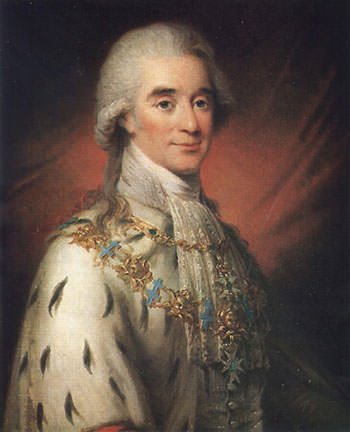
A Brush With Death
The French Revolution began with the Storming of the Bastille on 14th July 1789. On 5th October, a large crowd of protesters, mostly women, began to assemble at Parisian markets. They were troubled due to the unaffordable prices of bread. After getting unsatisfactory responses from city officials, the women marched from Paris to the Palace of Versailles. They were convinced that the royal family lived in luxury oblivious to the problems of the common people. They stormed the palace, killing several guards, and some searched for the Queen’s bedchamber. As the crowd screamed in the halls around her, Marie Antoinette ran to the king’s bedchamber barefoot and spent some agonizing minutes before her knocks were heard. The crowd pressured the king to “live among the people”. Louis XVI ultimately conceded to their demands. The next day, he, along with his family and most of the French Assembly, were escorted by the crowd to Paris. The royal family moved to the dilapidated Tuileries Palace in Paris.

Secret Negotiations With Mirabeau
As the French Revolution raged on, Marie Antoinette established an alliance with Honoré Gabriel Riqueti, comte de Mirabeau, the most important lawmaker in the assembly. She established a secret negotiation with him urging him to restore the king’s authority. In return, she promised to pay him 6000 livres per month and one million if he succeeded. However this leverage within the Assembly ended with the death of Mirabeau in April 1791.
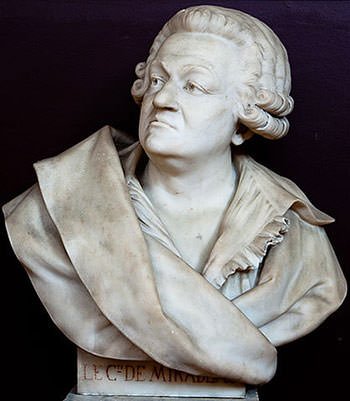
Flight to Varennes
The royal family then made plans to escape. Marie Antoinette’s close friend Fersen borrowed large sums of money to aid their escape. They planned to escape to Austria and then recapture the French crown through foreign assistance. On the night of 20th June 1791, the royal family fled the Tuileries Palace dressed as servants with their servants dressed as nobles. Few people in France had seen the king personally but his image was printed on the currency. Due to this, Louis XVI was recognized the next day. The royal family were arrested at Varennes and returned to Paris. On the way back, they were jeered and insulted by the people as never before. A member of the Assembly had to in fact protect Marie Antoinette from the crowds. The Flight to Varennes proved disastrous for the royal family. The king and queen were now viewed as traitors who were willing for foreign intervention to return back to power.
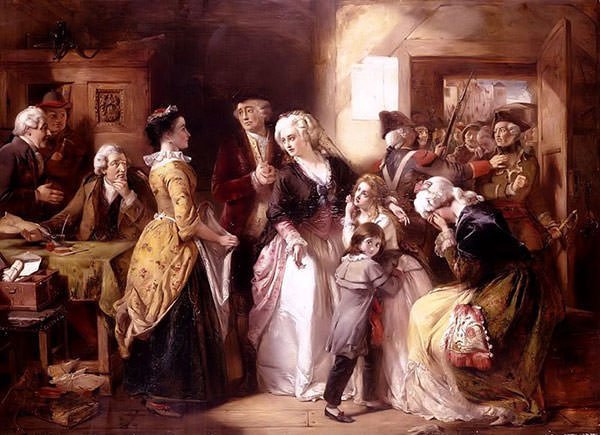
Monarchy Abolished
During the crises of the French Revolution, Marie-Antoinette proved to be stronger and more decisive than her husband. Even after the failed escape, she opened secret negotiations with some of the leaders of the Constituent Assembly. However, these proved to be unsuccessful. On August 10, 1792, around 20,000 Parisians marched on the Tuileries Palace and killed the Swiss Guards who were assigned for the protection of the royal family. In response, the king and the queen fled to the Assembly for protection. Louis XVI was officially arrested on 13th August 1792 and sent to the Temple, an ancient fortress in Paris that was used as a prison. On 21st September 1792, the monarchy was abolished and France was declared a Republic. The royal family name was downgraded to the non-royal “Capets”.
In Parisian Prisons
Marie-Antoinette spent the remainder of her life in Parisian prisons. Louis XVI was executed in January 179. Several plots were made to release the Queen but all of them failed. In August, Marie-Antoinette, now known as Widow Capet, was put in solitary confinement in the Conciergerie. This was the most difficult period of her captivity. She was under constant surveillance and had no privacy. Another attempt to help her escape was made but it was unsuccessful as all the guards couldn’t be bribed.
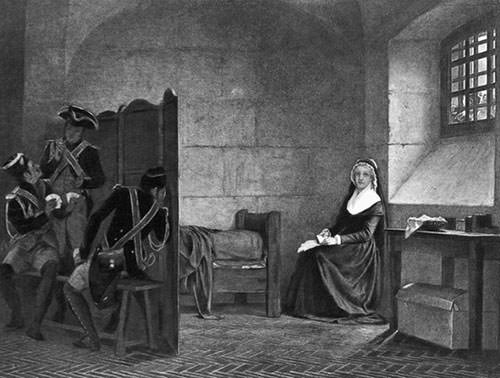
Trial And Execution
Marie Antoinette was tried by the Revolutionary Tribunal on October 14, 1793. Her lawyers were given less than one day to prepare her defense. Among the accusations were: orchestrating orgies in Versailles, sending millions of livres of treasury money to Austria, planning the massacre of the National Guards in 1792 and incest, a charge made by her son Louis Charles, pressured into doing so by the radical elements who controlled him. Most of these accusations were not true. It is said that the fate of Marie Antoinette had been decided before the trial. On October 16, she was declared guilty of the three main charges against her: depletion of national treasury; conspiracy against the security of the State; and high treason because of her intelligence activities in the interest of the enemy.
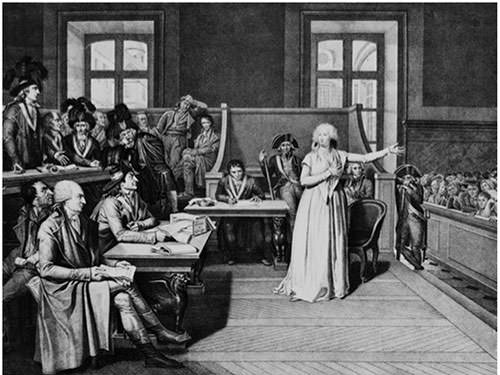
Marie Antoinette had to change in front of guards as she prepared for her execution. Unlike her husband, she sat in an open cart which carried her to the guillotine. She is said to have been dignified and composed during the ride. Marie Antoinette was guillotined at 12:15 p.m. on 16th October 1793. Her last words were “Pardon me, sir, I did not do it on purpose.”
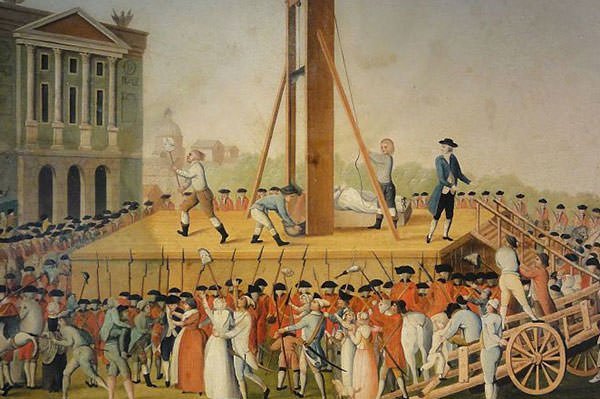
Assessment
During her life, Marie Antoinette was regarded as a symbol of what was wrong with the old regime. Among other things, her extravagance during the financial crisis showed the divide between the royal family and the common people. Her death was considered by many revolutionaries as an essential step towards completing the Revolution. However, now many people consider her a victim of the situation in France. Even her critics have recognized her qualities as a mother and her courage in dying. Long after her death, Marie Antoinette remains a major historical figure linked with conservatism, the Catholic Church, wealth and fashion. She has been depicted in numerous books and films.

